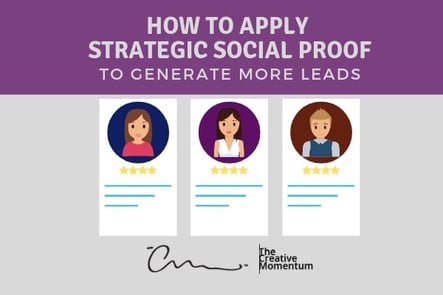
Social proof is a popular and effective means of product promotion. In fact, 91% of people read product reviews regularly or occasionally, and 84% trust them as much as word of mouth from friends. With stats like that, it’s no wonder that testimonials, shout-outs, and review sections are commonplace across the web. The issue is that not all social proof is created equal. A new study out of CXL Institute matches numbers to results based on a quantitative study with eye-tracking, surveys, and more.
“This product changed my life. Before TastyBitstm cereal, I struggled to balance child support payments with clinical depression and my job in custodial services. I am now CEO of a Forbes-listed multibillion dollar LLC. I also beat cancer and took gold at the Tour de France. Highly recommend, especially the “Fruity Toots” line of TastyBitstm.”
– Product review, Anonymous
Putting Faces to Names
One of the major findings of the study was that social proof with photos increased recall among participants. People were more likely to remember testimonials with visual aid. Being able to associate imagery or faces with a review was more effective in presenting memorable social proof than numbers or gleaming rants. It isn’t that much of a jump to consider that the point of social proof is to bring a human element into your branding, so humanizing this content made it more effective. However, the principle also applied to logos associated with clients as long as they were accompanied by a review and not simply the logo.
Says Who?
Subsequent surveys after eye-tracking found that the source of reviews was also relevant to recall. High-profile client logos associated with reviews were more likely to be remembered than obscure brands. On a consumer level, the analogue would be between everyday faces and influencer endorsements –the takeaway being that your sources carry weight in how seriously people take your social proof.
The Court of Public Opinion
Regardless of the way that social proof was presented, previously held knowledge still applied. People were likely to place a higher weight on social proof than many other forms of content.
This principle can complicate matters in that the trend of your reviews will be noticed by consumers. Mixed or mediocre reviews will garner similar results. The delicate balance here is to present social proof with enough of a spread to seem genuine and not cherry-picked or fabricated without muddying up the waters too much.
One way or another, your social proof is likely to be remembered, so your testimonials section should be far from an afterthought in the web design and marketing process.
Mix It Up
If you’re at the stage of garnering user reviews and putting thought into social proof, you’ve hopefully already considered your channels and social media strategy.
Beyond curated testimonials, social media and comments sections are viable ways to engage with your market segment. As long as you’re responsive and work to connect with the needs of your base, fostering continued engagement on public platforms like Twitter, YouTube comments, Yelp reviews, or your website’s own comment section, is a winning strategy to increase conversions and shine a light to your success.
To this end, the findings of the CXL study and the popularity of social media point in the direction of influencer marketing as an effective tactic for B2C marketing as it produces visible high-profile social proof to a built-in market segment associated with a given influencer. Just make sure to pick the right one.
Beyond the Comment Box
More so than testimonials and comment pages, social proof is a psychological concept underlying conformity. People are likely to follow group actions and the purpose of your efforts in presenting social proof are to inspire the perception of your product or service as a normative choice to your target market.
Although social proof with associated faces, logos and identifiable consumers holds the highest weight with your market, it also applies to your content approach in general. We’re social creatures and look to others in our cues to make decisions and direct our behavior.
Your copy can push social proof through demonstrating the actions of others. Your imagery can elicit feelings of collective action. Social proof can take many forms.
However, this principle belies a caveat: negative social proof can backfire terribly. If you try to push the urgency of your product or service with the risks of missing out, your effort can have the opposite effect. If you’ve ever questioned how effective the “deaths from smoking” ads are, you would be in the right, as previous research has illustrated that messaging that employs negative social proof can have the opposite effect. The implications are that reporting on collective negative actions normalizes the results to onlookers, essentially by the same principle through which social proof works in the first place–compliance.
Continued evidence points to social proof as a highly effective means to influence behavior in target markets, but you want to make sure that its influencing in the right direction.
Given that it’s memorable, effective, and nuanced, your social proof strategy deserves the same attention as your overarching efforts in content, branding, and lead-generation. Executed properly, social proof will be remembered and will pull in the results that you’re hoping for.

